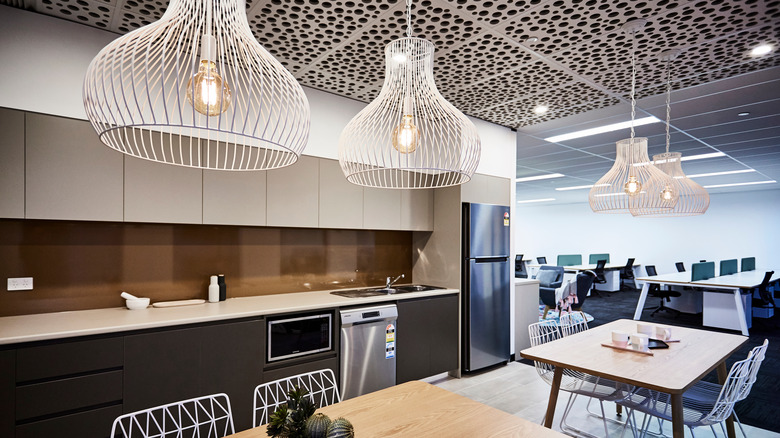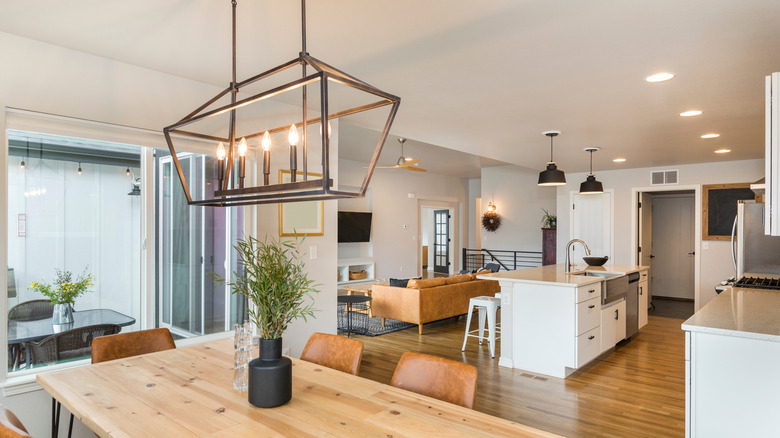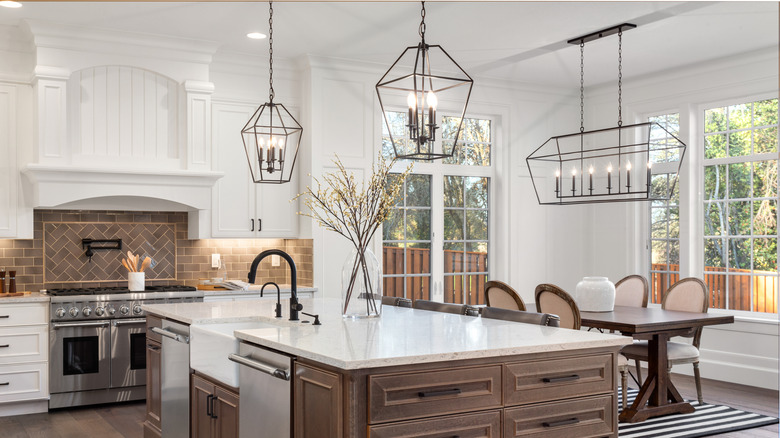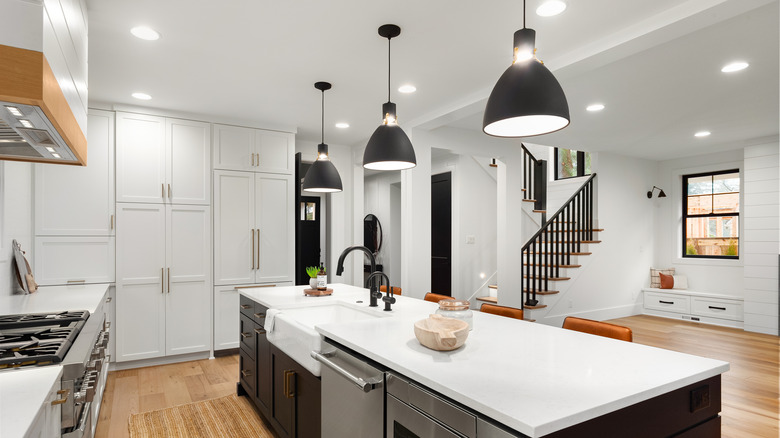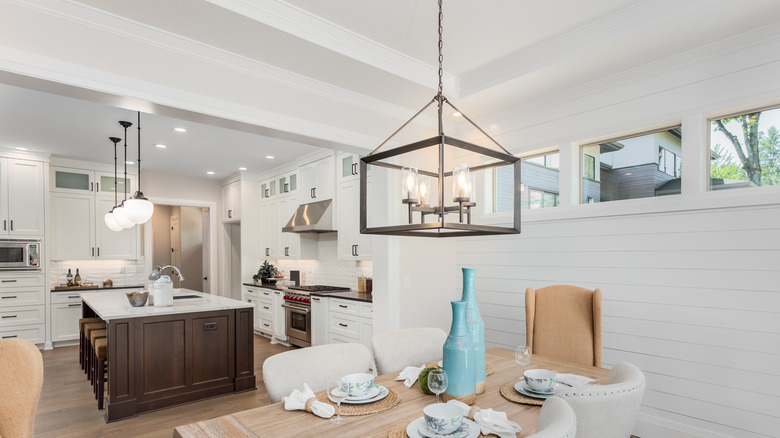5 Things To Consider Before Installing A Pendant Lighting
Today lighting fixtures work in more ways than providing enough illumination for your home. In fact, for most homes, the ideal lighting fixture is the one that provides the right balance between functional lighting and a welcoming ambiance. One lighting fixture that is trusted to give you this delicate balance is pendant lighting. If you are looking for the perfect excuse for introducing drama into an otherwise blunt interior design, consider installing pendant lighting. According to Architizer, pendant lighting is not only beautiful but is also a cheaper alternative to installing chandeliers.
True to its name, this lighting fixture hangs from the ceiling using a chain in a pendant-like fashion. It is worth mentioning that pendant lights are pretty versatile and have found application in many places. However, before installing pendant lighting anywhere, there are a few things that you need to put into consideration. This will go a long way in ensuring that they remain functional and provide the aesthetic effect you want. Here are a few things you should consider when looking to install pendant lighting in your home.
1. Think about your goal
Again, pendant lighting is available in different styles, colors, and textures. So before picking just any other pendant from the store, think about your home's interior décor and how that particular pendant light will fit in. This will help you get your objectives in order and further inform your choice of the type of pendant lights to go for. Figure out if the light is to provide proper lighting for a given task or generally for aesthetics.
If the lighting fixture is for providing light for a given task, then you need to get pendant lighting, preferably with a down lighting element. However, if the fixture is for decorative purposes, then diffused lighting will do a lot of good for that spot. It is also a good idea to have light dimmers in your fixture. This will not only save you money on energy bills but also allow you to regulate the beam depending on your desired ambiance, via the Department of Energy.
2. Pay attention to size and proportion
How big or small the pendant lighting should be is entirely relative to the size of that particular room. If you go too big, it might overwhelm the space; going too small, you risk the light fixture not bringing the impression it is supposed to, not to mention providing insufficient lighting that might not be useful. Besides that, you also need to pay attention to how low you should hang the light fixture. According to Lights Online, you should leave no less than 1 foot for people to move around comfortably without worrying about head injuries.
Ideally, you should consider hanging pendant lights between 12 to 20 inches below an 8-foot ceiling for proper ambient lighting. While it might sound obvious, size and proportion are vital when working with any lighting fixture, including pendant lighting. Generally, bigger pendant lights have more dramatic effects than their smaller counterparts; therefore, if you are thinking of creating a significant visual impact, choosing a bigger fitting is a safer bet.
3. How about the environment
While most rooms in the house have almost similar conditions, the kitchen and the bathroom are pretty different. With cooking oil and steam in the kitchen and bathrooms, some interior designers will advise against installing pendant lights in these two rooms. Fortunately, there are ways you can incorporate such fixtures in every room, including the kitchen and bathroom. Before buying your desired fitting, be sure to take a look at the ingress protection rating and whether or not it is suitable for the particular environment of the room.
According to Linak, the ingress protection rating is a scale for detailing the level of protection on electrical devices against external interference from substances like water or dust. Keep the design as simple as possible for environments with dust or grease, like the kitchen. This will allow you to clean the fitting whenever necessary. Remember, cooking grease can reach into tight spaces, making cleaning extremely difficult. This can be quite frustrating because, over time, the dirt will accumulate, making your pendant light fitting look undesirable.
4. How to install more than one fitting
Installing a collection of pendant lights over a given space, for instance, long dining or a counter has the potential to create great visual interest. One unwritten design rule that most interior designers implement is what is called "The rule of three." In other life scenarios, even numbers make more sense; however, for interior design, this rule creates just the right balance that looks appealing to the eyes, details Talie Jane Interiors. However, it is also important to mention that you shouldn't try fitting the rule of three over every scenario. If you are trying to install pendant lighting over shorter counter spaces, there is no harm in breaking the rules.
To avoid overwhelming the space with too many details, go for one or two fittings instead of three. On the other hand, for an extra-long dining table that requires more than three fittings, it is always safe to go with odd numbers. Instead of installing four pendant lights, five or seven will look better. Remember, the whole idea is finding the right balance to provide the space with the necessary lighting and an appealing look without cluttering your kitchen or dining area.
5. Think about light quality
You will be surprised just how important quality of life is to our daily life. The right lighting not only improves the functionality and aesthetics of a given space but also plays a massive role in your behavior as an individual. According to research by the University of Toronto, a room's lighting affects our emotions and decision-making. When thinking about a room's lighting, the two most important things to consider are the temperature and the color rendering. Ideally, a warm color temperature is suitable for most homes, while a perceived cold temperature is typical for offices.
Color rendering, on the other hand, is how the object appears under a given light source. This is particularly important to the interior setting since objects don't have true color because of the illumination from artificial light. For this reason, it is important to know the artificial light's rendering ability before installation. Since natural light has the full spectrum, it is rated 100; however, any artificial source of light rated 80 or higher will be ideal for interior lighting, via Waveform Lighting.
